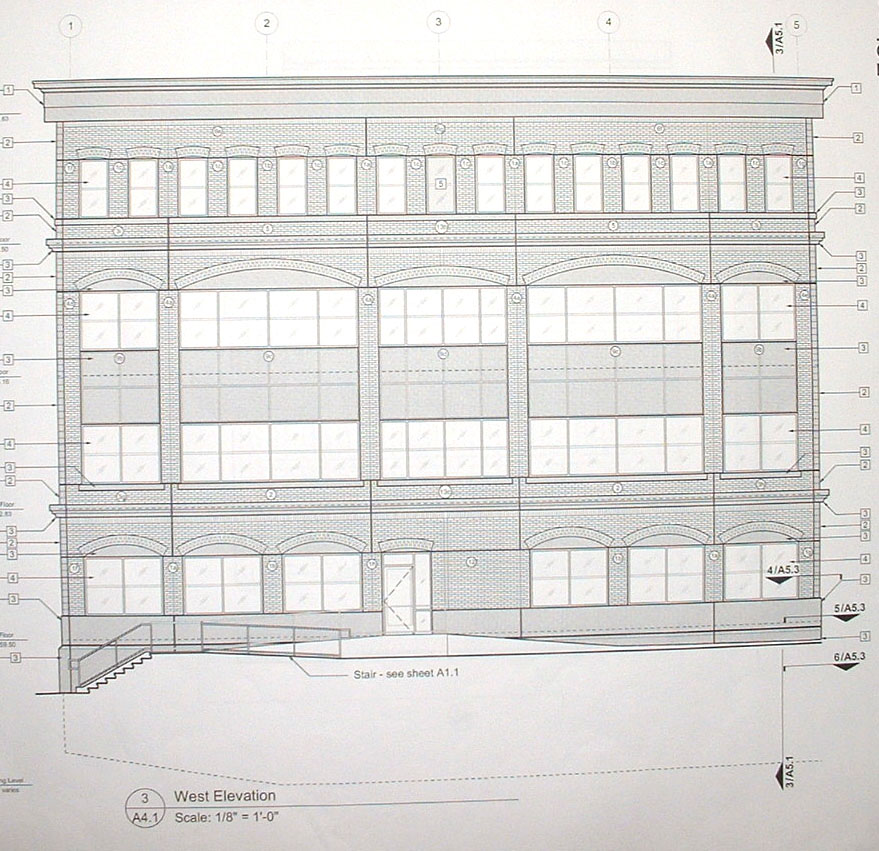

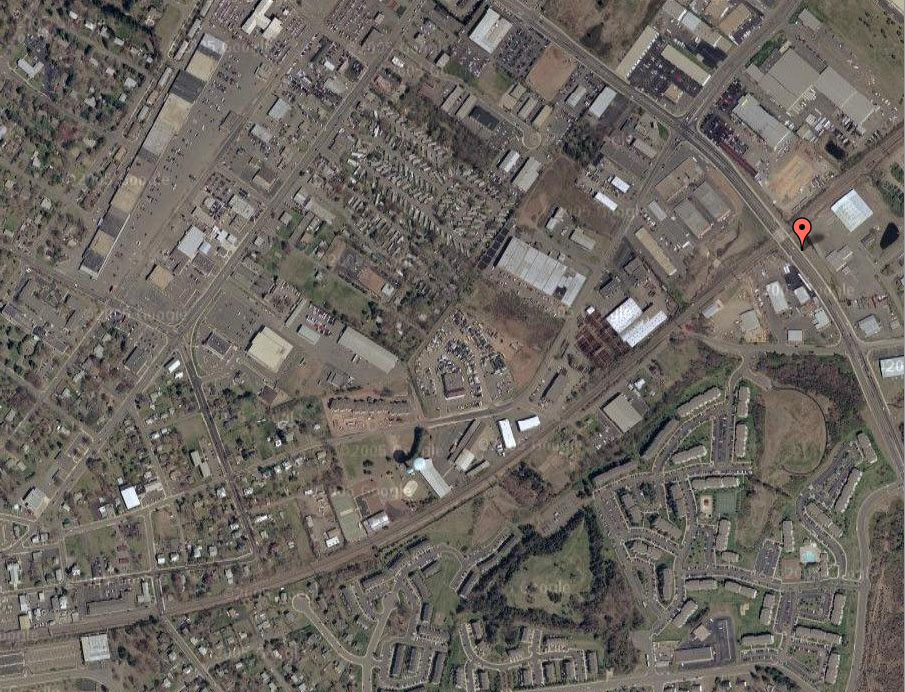
The Signal Hill Professional Center is an office/condo building new to Manassas, a suburb of Washington, DC. At four stories tall with one floor of underground parking, over 45,000 square feet of office space, and not far from the historic Manassas town center, it is a welcome addition to the area.
Building Statistics
BUILDING NAME Signal Hill Professional Center
LOCATION 9161 Liberia Ave, Manassas, VA 20110
OCCUPANT NAME Mid-Atlantic Real Estate Investments
FUNCTION TYPES Offices, Bank
APPROXIMATE SIZE 67,889 Square Feet
STORIES ABOVE GRADE 4 / 5 (total)
DATES OF CONSTRUCTION 2005 - 2006
APPROXIMATE COST To be Updated
PROJECT DELIVERY METHOD To be Updated
ZONING To be Updated
MAJOR NATIONAL CODE Virginia USBC (IBC 2000)
Project Team
OWNER Mid-Atlantic Real Estate Investments (Oakton, VA)
GENERAL CONTRACTOR R. W. Murray Co. (Manassas, VA)
ARCHITECT The M Group Architects (Vienna, VA)
STRUCTURAL ENGINEER Morabito Consultants (Baltimore, MD)
MEP ENGINEER K. T. A. Group, Inc. (Herndon, VA)
CIVIL ENGINEER Bowman Consulting (Manassas, VA)
Additional Building Information
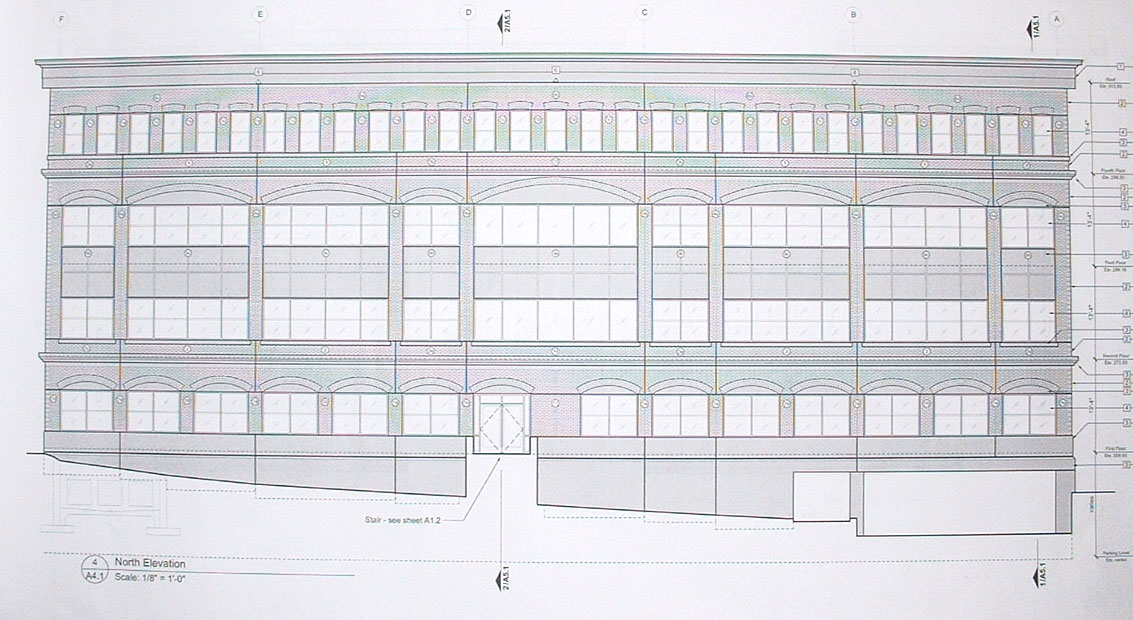 Typical
Elevation
Typical
Elevation
ARCHITECTURE
The Signal Hill Professional Center is an addition to Manassas, a bustling suburb of Washington, DC. At four stories tall with one floor of underground parking, over 45,000 square feet of office space, and not far from the historic Manassas town center, it is a welcome addition to the area.The building itself is separated into an east and west side, with entrances, vestibules, an elevator, and a corridor in between. On the first floor, the east side is intended for a bank, with 400 square feet, a separate entrance from the vestibule, and special framing around a future vault, while the west side is separated into two individual office areas of approximately 2500 and 1750 square feet. Upstairs, space around the central elevator and corridor core is more flexible, with one open area, though two entrances, two seats of HVAC ducts, and three plumbing risers suggest they could be divided.
 Taking
advantage of the natural slope of its site, which changes 20’-0”
from one corner to another, it houses additional parking on one underground
level to both add parking in congested Manassas and provide more green space.
A traditional exterior, with appropriate brick transoms, cornices, and detailing
compliments traditional architectural styles of Northern Virginia.
Taking
advantage of the natural slope of its site, which changes 20’-0”
from one corner to another, it houses additional parking on one underground
level to both add parking in congested Manassas and provide more green space.
A traditional exterior, with appropriate brick transoms, cornices, and detailing
compliments traditional architectural styles of Northern Virginia.
Typical Floorplan
BUILDING ENVELOPE
Thermal and moisture transfer are controlled at building openings, wall surfaces, roof and floor surfaces, basement wall surfaces, and junctures between differing materials. There are three entrances to the building; two on the north and south side of the first floor, each with vestibules featuring medium stile aluminum and tempered glass, and one in the basement parking area, with insulated hollow metal painted doors. Other window openings feature insulated glass in a prefinished aluminum storefront.
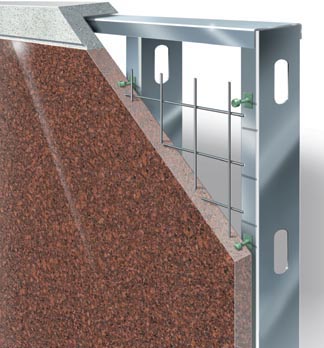 Most
notable in the building envelope is the use of the “Slender Wall”
precast concrete exterior wall system, produced by Smith-Midland of Midland,
Virginia. This system employs galvanized steel studs attached to 2”
thick precast concrete exterior panels, reinforced with welded wire fabric.
With a 1/2” air space between concrete panel and steel stud, connected
by epoxy coated stainless steel anchors, this system claims to reduce thermal
transfer by up to 25% and help isolate the exterior concrete skin from lateral
stresses and movement incurred in the building superstructure. Additional
glass fiber foil faced insulation in the wall cavity and gypsum wall board
finish on metal furring complete the wall envelope for floors one through
four.
Most
notable in the building envelope is the use of the “Slender Wall”
precast concrete exterior wall system, produced by Smith-Midland of Midland,
Virginia. This system employs galvanized steel studs attached to 2”
thick precast concrete exterior panels, reinforced with welded wire fabric.
With a 1/2” air space between concrete panel and steel stud, connected
by epoxy coated stainless steel anchors, this system claims to reduce thermal
transfer by up to 25% and help isolate the exterior concrete skin from lateral
stresses and movement incurred in the building superstructure. Additional
glass fiber foil faced insulation in the wall cavity and gypsum wall board
finish on metal furring complete the wall envelope for floors one through
four.
The roof envelope is mainly composed of a ballasted single ply membrane roof and insulation on metal deck. In this system, rounded riverbed stones of 1-2” are placed atop foam insulation board placed on fiber-reinforced felt facers, adjusted in thickness to accommodate a 1/4”:1’-0 roof slope for drainage. When placed on the 3” metal deck, the entire system is an average depth of 6 1/2”.
Between the first floor and parking areas, spray on insulation by K-13 Spray-On-Systems, rated R-11 minimum, coats a structural composite floor deck.
The 1’-10” thick poured concrete walls in the underground parking area feature a bituminous dampproofing membrane created from woven glass fabric treated with asphalt. In addition, 1” polystyrene panels with channels provide drainage away from below grade walls.
The roof connects to walls at a parapet; an overflow scupper on the inside corner provides drainage while the roof membrane is extended vertically on the inside of the parapet to provide a seal at the juncture. At the juncture between exterior wall, below grade wall, and floor, the dampproofing membrane extends underneath the precast panels up to the floor, and the panels extend to slightly below soil elevation.
CONSTRUCTION
Details concerning the construction of the building are not yet available.
STRUCTURAL
The building structure is composite steel. This system features 30’-0” x 20’-0” bays with typical W10s at 10’-0” spacing attached via 5 1/2” x 3/4” metal shear studs to a 3 1/2” metal deck with 3” lightweight concrete. Girders and certain beams are cambered. To resist lateral loads, the left and right walls are moment frame with full penetration groove welds, and additional floor bracing provides further support. Further lateral resistance is provided by concrete retaining walls in the basement, which are attached to the columns via concrete pedestals.
The underground parking area features poured 18” thick concrete walls on a spread footing, tied to exterior load bearing steel columns via pedestals.
The structure of the driveway extending over the underground parking area proves to be more interesting. It employs typical W10 beams spaced every 5’-0” simply supporting a 2” metal deck with 4 1/2” normal weight concrete slab and 4” concrete topping. These beams, resting on girders as large as W24, are angled to mimic the slope of the site, which prevents them from directly connecting to the first floor girder. Therefore, beams supporting the driveway are coped when higher than floor level, attached at differing locations on the building girder when close to floor level, and attached via a W6 hanger when far below floor level.
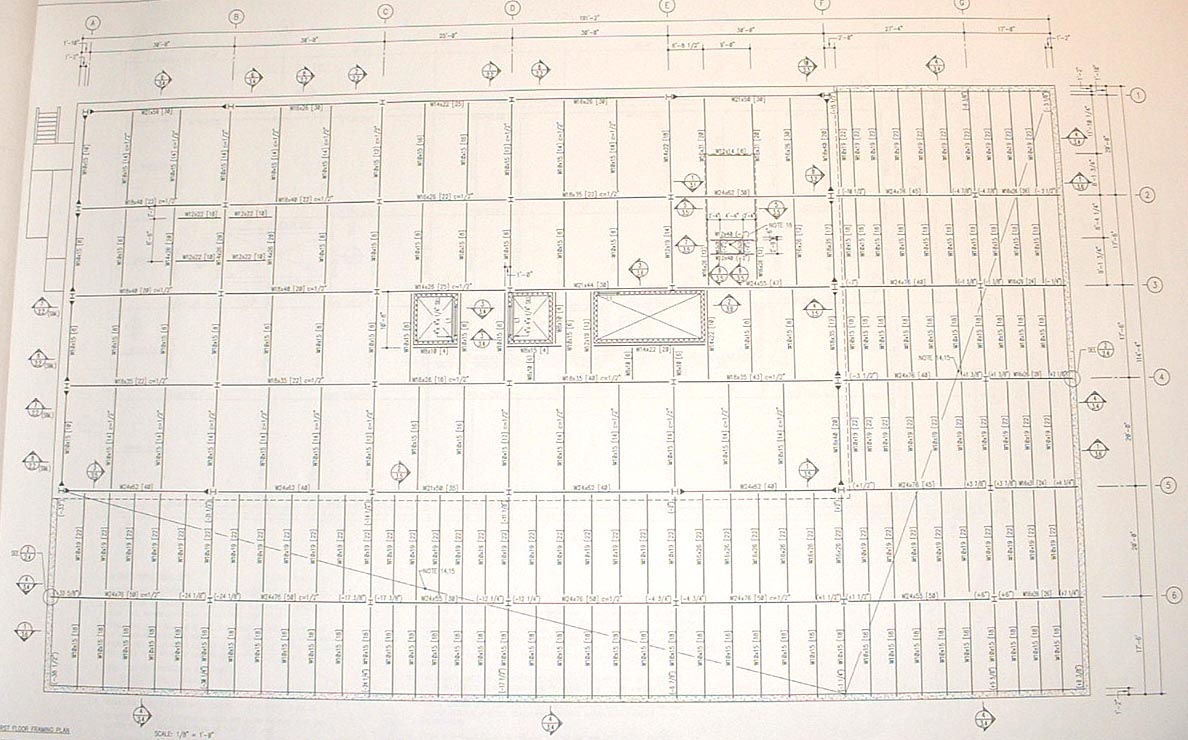 Typical
Structural Floorplan
Typical
Structural Floorplan
MECHANICAL/HVAC
The source of heating and cooling is primarily from two rooftop units which separately serve the east and west side of the building. Each features a 44.1 horsepower fan capable of supplying 27000 cfm of recirculated air, 75 ton chillers, and 43 ton heating coils with four compressors. Ductwork servicing these rooftop units extend downward through the electrical rooms to floors 1 through 4, distributed through air diffusers in corridors and VAV boxes in some locations in office areas. Though ductwork is built-in to the rented office spaces, tenants are merely advised as to where to place additional VAV boxes.
Additional heat is provided in enclosed areas adjoining the basement garage, the stairwell adjoining the vehicular entrance, and the north vestibule by four one-phase 1 ton electric heaters.
Exhaust from the bathrooms and electrical/elevator rooms are handled by two 0.75 hp exhaust fans capable of moving air at 2500 cfm. In addition, three 0.86 horsepower fans are used for car exhaust from the underground parking area at 10000 cfm with another three 1.5 horsepower fans used for garage air circulation at 12000 cfm.
Snow and ice build up on the ramp accessing the underground parking area is handled by 277 V 3-phase circuit wires placed inside the concrete driveway.
ELECTRICAL
Power enters the Signal Hill Office Building from the west side of the building
via a 10-way concrete ductbank featuring 10 4” PVC pipes. The main
feeder consists of seven sets of 4 500 KCMIL wires with two #2/0 ground
wires capable of carrying 2500A at 480/277V. Upon entering the main distribution
panelboard, which has a 2500A capacity, the power is distributed to five
480/277 V panelboards, one per floor, via two sets of 4 #3/0, 1 #3 ground
feeders. These panelboards, each with 400A circuit breakers, service exterior
HID lighting, floor heaters, anti-icing wiring in the garage driveway floor,
existing interior lighting, VAV boxes, and water heaters in each bathroom
area. Each floor also features a transformer to step down power to 208/120V
for an additional two panelboards with 225A breakers, used for receptacle,
elevator equipment, and future tenant loads. On the fourth floor only, one
of the 208/120V panelboards services the rooftop mechanical units.
LIGHTING
Most lighting decisions are left up to the tenants in each office though full 277V lighting is provided in the garage areas and corridors while functional non-aesthetic surface lighting can be found in each office. In the underground level, indirect recessed high intensity discharge lamps are used with wall mounted 75 watt pendants to maintain a bright, safe parking area. Ceiling mounted 54 watt fluorescent lamps are used in functional bathrooms, electrical rooms and elevator mechanical rooms. Office spaces feature ceiling mounted 54 watt fluorescent lights until they are occupied. In more aesthetically conscious areas, including corridors and the lobby, recessed 13 watt compact fluorescent lamps are used throughout.
PLUMBING
Plumbing is brought into the building via 3” pipes which then serve four separate risers which become successively smaller as they progress through the office levels. One riser is used for the bathrooms, with a 3-phase, 277 V hot water heater at each level for bathroom use. The remaining risers are capped and designed for future tenant use; two are found in the east office and one is found in the west office.
Sanitary drainage is provided by four 4” stacks adjoined by 3” vents, one set on each side and two sets in the bathroom areas. The sanitary stacks collect in drainage fixture units which empty into the sewer.
Storm water is managed by three 3” and four 4” pipes regularly placed within the north and south walls which empty into a storm water drain per civil engineering plans.
FIRE PROTECTION
Office, bathroom, and parking areas are protected by an automatic sprinkler system to be installed by the contractor. A dry standpipe is provided at the first floor, and a garage dry-pipe sprinkler system is provided throughout the covered parking area.
In addition, a fire alarm control panel with its own battery and charger are provided at each level with smoke detectors, fire alarm system dialers, and fire alarm annunciator panels.
Additionally, internal bays in the structure primarily around corridors, the stairway, and elevator feature 2 hour fire rated slabs, 2 hour fire rated beam fireproofing, and 2 hour fire rated column fireproofing.
TELECOMMUNICATIONS
Phone services are provided through a ductbank in the south end of the building with six 4” PVC pipes. After passing through a telephone backboard, three 1.25” ducts will carry the phone wires to all floors and offices, to be completed by the contractor.
TRANSPORTATION
Two elevators and one set of fire-rated stairs will be used from the basement parking level to the fourth. An access hatch is used to gain access to the roof and rooftop heating/cooling units.
SPECIAL SYSTEMS
No special systems are noted as of this time.
